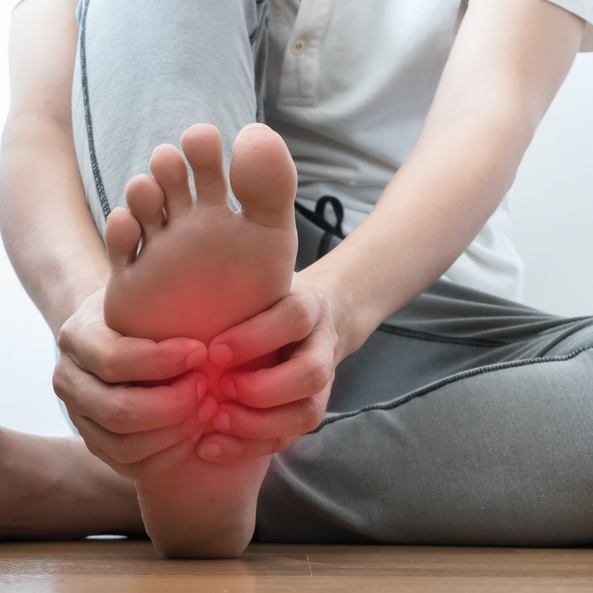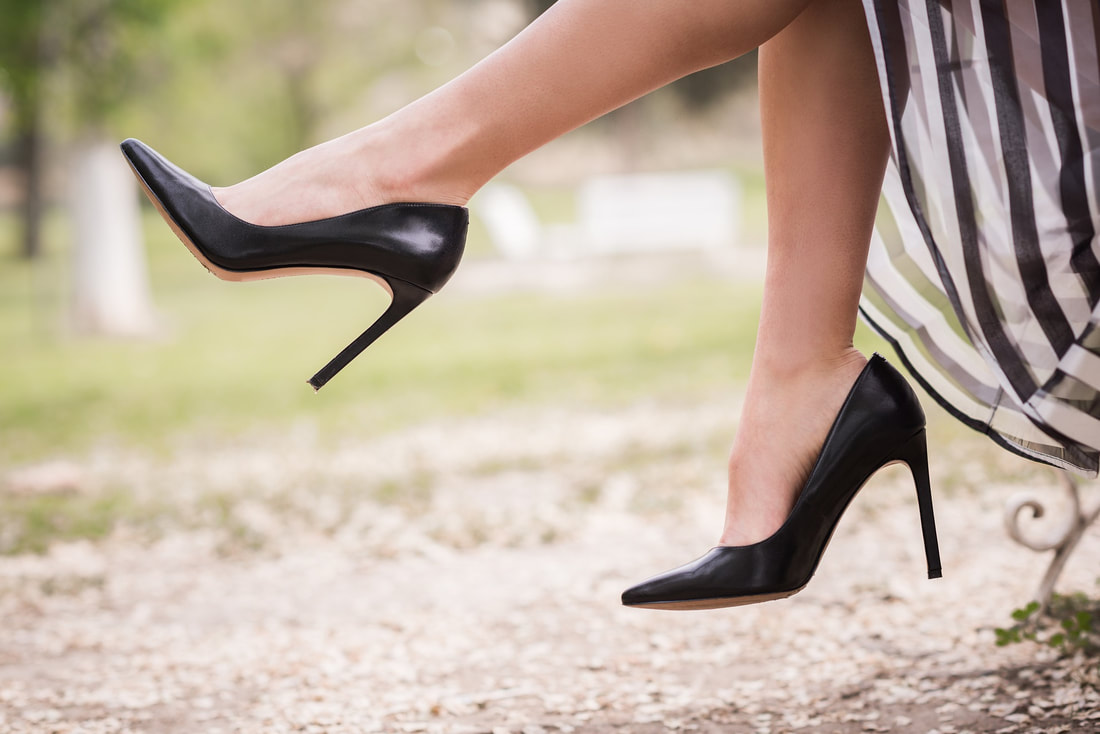|
Foot and heel pain can really impact your day. It can be a hard area to avoid aggravating through use and movement, for obvious reasons! A very common cause of heel pain is a condition called Plantar Fasciitis. This is an inflammatory condition of the thick connective tissues of the heel and sole of the foot.
The sensation is usually described as a sharp, stabbing feeling directly under the heel. Its generally most painful first thing in the morning, or after resting for some time. Depending on the severity, this can last anywhere from a few moments, to being felt constantly throughout the day. It can be caused by an acute injury or strain to the plantar fascia, and can also develop over time. People who are on their feet for long hours can develop this foot pain, especially if they don't have good supportive footwear. Our bodies are pretty good at finding work arounds to keep us moving, so if you're experiencing plantar fasciitis, you may notice some compensation patterns like limping, reduced ankle mobility, taking smaller steps, or toe walking to avoid pressure to your heel. Short term, these compensation patterns are fine, but if the heel pain becomes chronic then these altered movement patterns can lead to other pains further up the body. What can be done about Plantar Fasciitis?
Do you need help with heel pain? Book in with our team so we can help you with a treatment plan. As we get into the party season over summer, you’ll be wearing heels and thongs instead of runners. But if you find that you start to get more aches and pains, your shoe choice might be to blame. How shoes affect posture
The way that our feet hit the ground when we move has a massive impact on the joints and muscles of the body. And that means it affects our posture. When we wear heels, for example, our bodies tilt forward. The body tries to compensate in response, but the muscles and joints cop the strain. The weight of your body is held on the balls of your feet, instead of balanced between the balls and the heels. Your knees and hips move forward and your back flexes backward to maintain balance. Flats might not have the height issue, but they can also impact on the body. Flat shoes cause the weight to be mostly on the heels, so the lower body tries to compensate so we don’t fall backwards. Wearing flats constantly can mean our posterior chain – including the calves, hamstrings and glutes – can weaken from lack of use. Even thongs (or flip-flops, for non -Aussie consumers) can cause postural issues. They have been found to cause pain in the feet and even hips and lower back, due to the lack of support and altered gait (how you walk when wearing them). The real issue is that you have to grip the shoe with your toes, so they are overworked. Pain that can occur So if your shoes are altering the posture of your body, pain can often follow. Incorrect shoes can lead to issues including:
How to reduce it I’m sure all myotherapists and bodyworkers would prefer everyone wear sensible shoes 24-7! But that’s easier said than done. So if you think your shoes are potentially causing issues, here’s some small tweaks to reduce the issues:
Not ready to give up your heels or cute flats? I don’t blame you! So instead, let’s work together to counteract the muscle imbalances. Pop in for a 30 minute appointment, and we can get you back to feeling good. |
Meet Our Team
We have a team of great practitioners available 7 days a week at our Rowville clinic. Archives
July 2024
Categories
All
|
Got a question about Myotherapy?
Contact Mel by phone, email or Facebook
|
Simple Wellness Myotherapy & Remedial Massage Clinic
Shop 12B 150 Kelletts Rd Rowville VIC 3178 |
Phone us on
03 8204 0970 |



 RSS Feed
RSS Feed